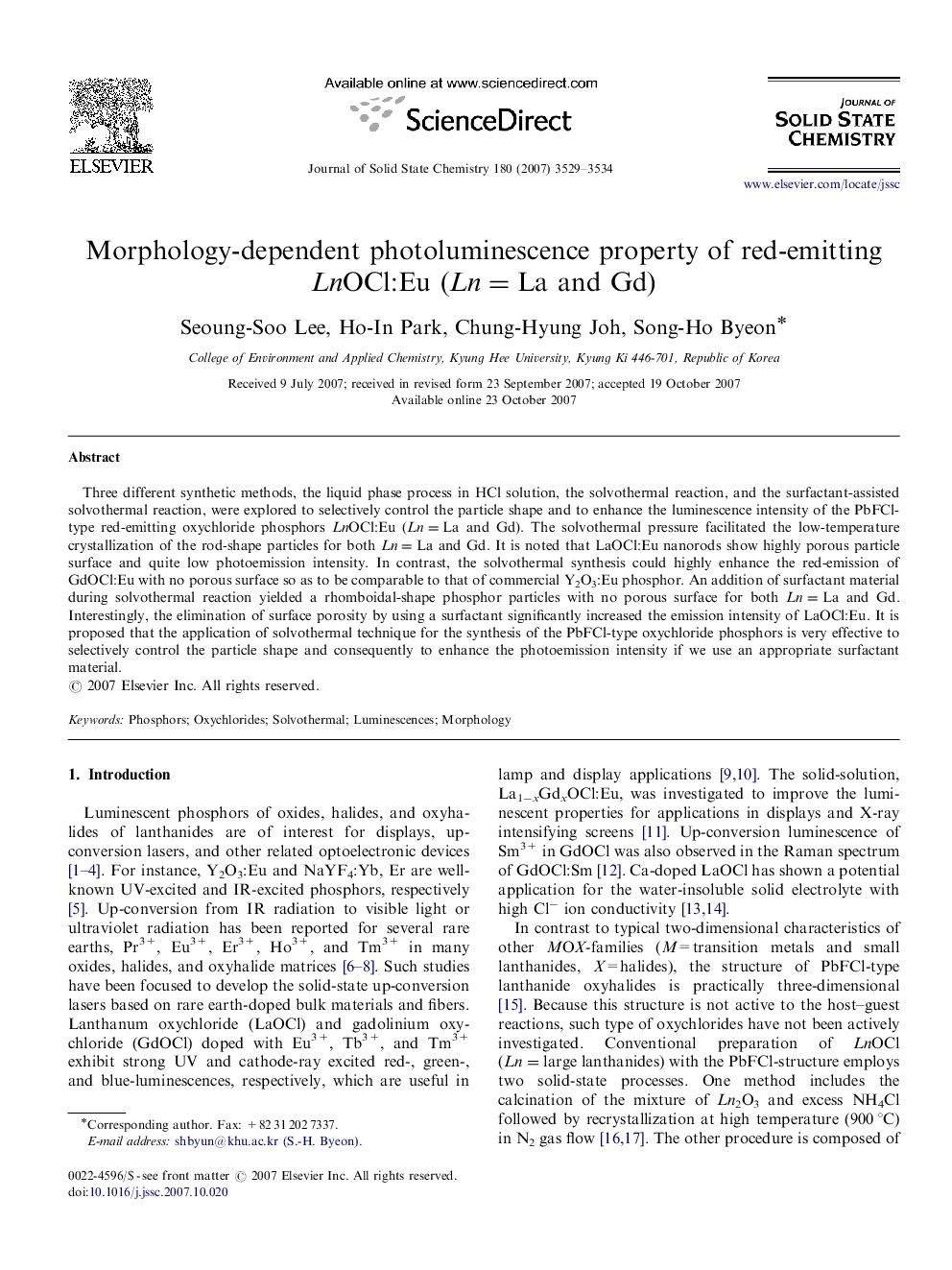| Article ID | Journal | Published Year | Pages | File Type |
|---|---|---|---|---|
| 1331126 | Journal of Solid State Chemistry | 2007 | 6 Pages |
Three different synthetic methods, the liquid phase process in HCl solution, the solvothermal reaction, and the surfactant-assisted solvothermal reaction, were explored to selectively control the particle shape and to enhance the luminescence intensity of the PbFCl-type red-emitting oxychloride phosphors LnOCl:Eu (Ln=La and Gd). The solvothermal pressure facilitated the low-temperature crystallization of the rod-shape particles for both Ln=La and Gd. It is noted that LaOCl:Eu nanorods show highly porous particle surface and quite low photoemission intensity. In contrast, the solvothermal synthesis could highly enhance the red-emission of GdOCl:Eu with no porous surface so as to be comparable to that of commercial Y2O3:Eu phosphor. An addition of surfactant material during solvothermal reaction yielded a rhomboidal-shape phosphor particles with no porous surface for both Ln=La and Gd. Interestingly, the elimination of surface porosity by using a surfactant significantly increased the emission intensity of LaOCl:Eu. It is proposed that the application of solvothermal technique for the synthesis of the PbFCl-type oxychloride phosphors is very effective to selectively control the particle shape and consequently to enhance the photoemission intensity if we use an appropriate surfactant material.
Graphical abstractThree different synthetic methods were explored to synthesize LnOCl:Eu (Ln=La and Gd) phosphors. The application of solvothermal technique was very effective to selectively control the particle shape and consequently to enhance the luminescence intensity if we use an appropriate surfactant material.Figure optionsDownload full-size imageDownload as PowerPoint slide
